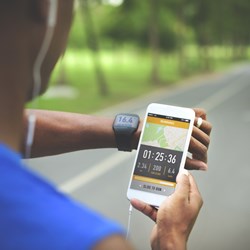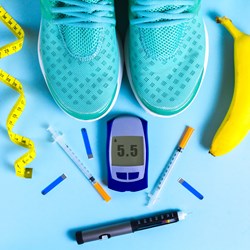Physical activity
Exercising regularly is a great way to stay healthy, keep fit, and control your weight. When you have type 1 diabetes, there are a couple of extra steps you will need to take to exercise safely. Exercise affects your blood glucose levels so a general rule is to check and record your blood glucose levels before, during, and after exercise. This can help you work out how much carbohydrate to eat and how much insulin to take.
When you have type 2 diabetes, the impact of exercise on your diabetes and general health can be huge. Eating better and becoming more active can help control your diabetes and in some cases allow you to reduce, or even come off medication altogether. Some types of medication (such as insulin and drugs like gliclazide) can make you more likely to have a hypo (lower blood glucose level) during exercise, so if you’re thinking about becoming more active, speak to your healthcare provider or diabetes care team first to make sure you can do so safely.
Advanced Search
Resource type -
Language -
Type of diabetes -
People with diabetes are encouraged to exercise regularly for better blood glucose control and to reduce the risk of cardiovascular diseases. Additional benefits of exercise include a healthier heart, better weight control and stress management.
Having type 1 diabetes shouldn't stop you from taking part in extreme sports, however, it does mean that you have to be a bit more prepared and plan for the unexpected. Martin Draper talks about his experiences with having type 1 diabetes and participating in extreme sports.
This page discusses physical activity and exercise.
This resource explains how exercise and physical activity affects your blood glucose and what you should bear in mind before you start exercising.





